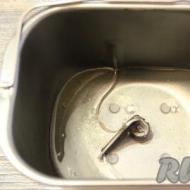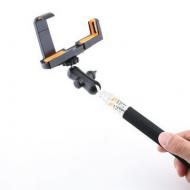
How to check the performance of the VAZ starter solenoid relay. Starter solenoid relay: device, malfunctions, check. Close the starter directly
Probably, many drivers got into a situation where the engine flatly refused to start? Especially often this problem occurs with owners of old Zhiguli, and indeed, in domestic cars, because they do not want to work normally. Well, if the battery is dead. No, this, of course, is very bad, but much better than the covered wiring, the entire starter or its retractor relay, because the battery can be recharged from any car by throwing wires, and serious problems will arise with the rest. However, in order not to get into such a vile situation, it would be nice to know how to check starter relay- useful for the future of any driver.
Preparing for the test and the necessary tools
In order to normally get your hands on the retractor relay, you need to take care of access to it. If you still have a foreign car, then you will have to drive the car into a pit, a flyover, or, in extreme cases, raise it on a jack to the maximum in order to crawl under it, because for most foreign cars this part is available only from below, and if you are the owner of a miracle of the domestic auto industry , then everything is much simpler and easier - just open the hood. Finding the solenoid relay, find the terminals on it. This is not difficult to do, because there will be a wire on one of the terminals - this is the positive terminal.

To this positive terminal, you need to connect a multimeter in voltmeter mode. This is done easily and simply. Connect the red (positive) wire of the multimeter to the relay terminal, and throw the black (negative) wire to the vehicle ground. After connecting, either fix the wires in this position, or call a passerby, familiar friend, relative (underline tedious) so that he (she) starts the engine. And you are looking at the readings of the device, which should give out a stable 12 volts with the starter repeatedly clicking.
Display errors and verification
The starter can deceive you, because it can click even with less voltage. By the way, if it (voltage) is below 12 volts, then you need to charge the battery and / or check the ignition switch. In this case, it remains to resort to verification directly. To do this, turn off the engine, disconnect the wire from the relay (the one that extends from the ignition) and use a screwdriver to short the positive terminal. This is a simple way to apply voltage directly to the starter relay.

If the car did not start in any way, then from such actions directly it can start instantly. By the way, if the car starts up when connected directly, then either the ignition lock is covered and needs to be changed, or the relay is rotten and it also needs to be changed. That's all the checks. As you can see, there is nothing complicated and secret in this matter, and even a novice motorist can cope with such a task.
Really good and competent mechanics, when a starter or relay breaks down, strongly recommend changing the whole assembly to hell, rather than buying and installing individual parts. The fact is that the relays with the starter work in unison and a detailed replacement of individual parts can cost, if not more expensive, then the same amount. The question is, why buy a part of the node, when for the same money you can buy the whole one?
The procedure for checking, in the absence of starting the engine, is always the same. First, the battery charge is checked, then the ignition itself, and lastly the starter with its retractor relay. Don't do it the other way around, just waste your time.
And the last. If the entire assembly is out of order, do not rush to throw it in the trash can. Many offices completely replace their stuffing, and for the money it comes out cheaper than buying a new one. The economy will be modest, but it will be.
Many motorists have found themselves in situations where attempts to start the car ended only with the sounds of the starter relay under the hood. This is especially common in the frosty season. The battery capacity decreases faster and there is not enough charge. The review will make it clear what other causes of problems with the starter retractor relay are, whether it is possible to fix them yourself.
What it looks like, where it is
The solenoid relay controls the freewheel. Mount an electromagnet with a starter in one block. The part is equipped with a gear that should rotate the flywheel of the motor when it starts. If the flywheel continues to turn further, this will lead to a failure of the starter or the electrical network of the machine. To avoid this, the clutch is pulled out only when the engine is started (after which the relay returns it back). 
Outwardly, it looks like an elongated metal cylinder with an armature coil inside, where current is supplied after the circuit is closed. By compressing the return spring, pushing the lever with the movement of the freewheel, the resulting magnetic field causes the armature to move to the coil. The motor starts, the electrical circuit breaks, the magnetic field disappears, and the return spring pushes the armature with the clutch back.
Did you know?Today is the most big car in the world is a German-made dump truck Liebherr T 282B. Its weight is over 220 tons. In order to get into his cabin, you need to overcome as many as 16 steps. The body of this« monster» can freely fit a private house, and its carrying capacity is 363 tons.
How does the starter solenoid relay work?
Turning on the ignition starts the power supply to the winding of the device. As a result -
the formation of a magnetic field in the retracting winding, the retraction of the coil core and the closing of contacts. At the same time, the core pushes the clutch to the crankshaft flywheel, forcing it to scroll.  The retracting winding causes the core connecting the power connectors of the relay through the central contacts to be retracted, transferring energy from the battery to the starter and making it work. The winding holds the core, which guarantees the supply of energy to the starter.
The retracting winding causes the core connecting the power connectors of the relay through the central contacts to be retracted, transferring energy from the battery to the starter and making it work. The winding holds the core, which guarantees the supply of energy to the starter.
With a lack of battery charge, the retracting winding still works, but for the holding force it is no longer enough. A spring acts on the core and pulls it back, and the retracting winding again tries to return it to the coil.
Important! One of the common problems with the starter return relay is the burning of the power contacts. If this problem occurs, clean the damaged area well with sandpaper, and if the contacts are worn, replace them.
But since the retainer is not able to hold it, the core again goes back. Such attempts to transfer energy from the battery to the winding are characterized by numerous clicks of the core retracting and releasing.
Signs and causes of malfunction
Malfunctions can be noticed by such factors, eliminating which, this device will continue to work:
- the key turns with a click, but without the starter rotating;
- the key starts the rotation of the starter, but it remains idle, not acting on the engine;
- the car starts normally, but instead of turning off the starter continues to rotate quickly and with a bang.
 The reasons why the switch may fail are as follows:
The reasons why the switch may fail are as follows:
- violation of the integrity of the device due to marriage, mechanical wear or during an accident;
- a short circuit in the turns of the winding due to a long exposure to voltage when trying to start the motor;
- violation or burning of contacts due to poor connecting contact or prolonged operation of the starter to start the engine;
- weakening or breakage of the return spring due to mechanical stress or prolonged voltage supply;
- breakage of the holding winding caused by physical impact when the relay cover is loosely put on;
- loose fastening of the device, which leads to distortion and the inability of the core to fully enter inside to close the contacts.
Important! FROM The operation of the generator should be tested and battery so that its charge is sufficient to operate the starter. This must be done periodically.
How to check
To evaluate the operation of the device connected to the starter, you must first check the integrity of the supply wiring. Further, by turning the key, you can check for the presence of a sound of operation.
If there is a click (but no rotation of the starter), the probable cause is the burning of the contact plates. To find out if this is the reason, you should give voltage to the car engine, bypassing the relay. The relay terminal is disconnected from the lock, and two terminals are closed with a screwdriver - from the battery and to the starter. The rotation that has begun indicates a malfunction in the retractor. It is more convenient to check when the starter is disconnected.
 Then you need:
Then you need:
- place the relay near the battery, connect "plus" and "minus" to the relay contacts;
- attach the free end of the “minus” wire to the starter housing (a distinct click will show the normal operation of the relay).
How to disassemble
It should be noted that the starter relay, in which the rear contact covers are factory-rolled, is almost impossible to open. Only those relays where the back cover is fastened with screws are subject to repair. Below is a disassembly of just such a relay.
The necessary tools and equipment are:
- drill driver;
- soldering iron 100 watts;
- metal brush;
- copper stranded wire;
- soft wood block.
- Loosen the fixing screws on the rear cover with a screwdriver.
- For better heating with a metal brush, remove the oxidation that has appeared from the ends of the windings.
- With a heated soldering iron, melt the tin at one end of the winding and knock out its remnants on a wooden block.
- Do the same with the other end of the winding.
- Open the back cover by first bending the end of the wire.
Video: disassembling the starter solenoid relay
DIY repair
Having opened access to the inside of the solenoid relay, you can see the two ends of the wire of the soaking winding (thick) and the end of the wire of the holding winding (thin). At the exit point of the thin winding, the wire must be spot welded to the body. One of the frequent problems is a break in the holding winding in this particular place. This can happen if the cover is not screwed up during assembly, or it unscrews itself during operation.
Did you know? The legendary Soviet car "Victory" could have had a completely different name - "Motherland". However, after the question of Generalissimo Joseph Stalin: “Well, how much will our Motherland be?” the car immediately decided to rename.
As a result, there is a barely perceptible slack: the lid can move a little. When the moving contacts are struck, it bounces and touches the retracting wire. And that, acting on the wire of the holding winding, leads to its breaking off. If possible, then it is necessary to properly weld the end of the wire into place by spot welding. If not, then strip the wire well and, taking it a little to the side, solder it. The relay will be restored.
Also, for prevention, you should clean wire brush or sandpaper contacts on the case and inside covers. It remains to put the cover in place and tighten the screws with a screwdriver.  The most difficult part of this repair is the correct installation of the cover in place. Do everything in accordance with step by step instructions(see above). As a result, only clean holes should remain.
The most difficult part of this repair is the correct installation of the cover in place. Do everything in accordance with step by step instructions(see above). As a result, only clean holes should remain.
Peel off the insulation from a piece of copper stranded wire and take two strands from there. In the veins, slightly tin the ends and solder them to the ends of the windings. Next, you need to correctly orient the movable contact, which could move during stripping. It must be in such a position that the distance between the hole with the wires and the contact is the same for both sides of the plate. The distance from the screw hole to the contact must also be the same on both sides.
Next, you should orient the cover itself. The paired wire must pass into the hole where there is a contact. Next, you need to thread the thin wire guides into the corresponding holes and carefully put the cover on, pressing it on the spring. Tighten the screws with a screwdriver and slightly bend the ends of the wires outward, pressing them to the cover as tightly as possible.
Apply some alcohol-based rosin to the ends, remove the guide wires with a soldering iron, and solder the ends. To do this, you can use the same solder that was knocked down when you opened the lid. It remains to walk with a brush, insert an anchor, press and hear how the contacts work. The device has been restored.
Video: do-it-yourself repair of the starter solenoid relay
Now you know that the starter retractor is a fairly simple, but important device, since its malfunctions prevent starting car engine. Therefore, it is very useful to know the principle of its operation, to be able to disassemble and independently cope with a simple breakdown. This is quite an affordable task for a driver with minimal plumbing skills. You just need to stock up on time, desire and the appropriate tools.
A situation familiar to many motorists, when, after 2-3 unsuccessful attempts to start the engine, a crackling relay is heard under the hood and the starter refuses to crank the engine. This is especially true in winter, when the battery capacity drops and it is quickly discharged.
In order to better understand the cause of the malfunction of the retractor relay (BP), let's briefly recall the device of the starter itself and according to what scheme it works on a car.
Recall
The car starter is a short-term electric motor. If the power unit does not start after three to five attempts, then you need to look for the cause and not turn it in vain, since in most cases this affects its further existence. In simple terms - do not "rape" him.
Car starter device
The starter consists of a housing (inside which the stator winding is located) and a rotor rotating on two bearings, as well as a retractor relay.
At the end of the rotor shaft there is an overrunning clutch (bendex) equipped with a toothed gear, which engages with the flywheel when starting. crankshaft.

The task of the relay is to start the starter and provide a connection to the flywheel to start the engine.
relay device
The relay consists of a housing with windings, a core, a return spring, a central contact, a cover with two power contacts made in the form of bolts, the threads of which protrude from the cover. The cover also has a connector where power comes from the ignition switch at the time of starting the engine.
One of the bolts receives a constant "plus" from the battery, and the second contact is connected to the stator winding.

The relay core is connected by means of a plug to the bendex. The fork, in turn, works on the principle of a rocker arm. When the core is retracted, it pushes the freewheel to meet the engine flywheel, and when the core is released, the bendex is retracted.
Scheme of work
When the ignition key is turned to the “start” position, power is supplied to the relay winding, a magnetic field is created in the retracting winding, which draws in the coil core, which closes the power contacts. At the same time, the core through the fork pushes the freewheel to the crankshaft flywheel, causing the latter to scroll.
Structurally, the VR has two windings: retracting and holding.

The retracting winding draws in the core, which, through the central contact, connects the power connectors of the relay, transferring power from the battery to the starter motor, forcing the latter to work.
During this time, the holding winding holds the core, providing power to the starter motor.
In the case when the battery is discharged, then its strength is enough for the retracting winding to work, but there is not enough voltage for the holding one. The core, under the force of the return spring, moves back, and the retracting winding again tries to draw it into the coil, but the retaining winding cannot hold it, and it again moves back.
It is precisely these relay attempts to force the transfer of power from the battery to the stator winding that the driver hears in the form of frequent clicks (cod) when the relay core is repeatedly pulled in and released when power is applied to the relay.
Retractor malfunctions:
Burning of power and central contacts

Return spring failure

Interturn short circuit
Short circuit in one of the windings
Loose fasteners
Causes of malfunctions:
The burning of the connectors is caused in most cases by poor contact in the connections or long operation of the starter, when the engine “refuses” to start for a long time;
Spring breakage can be caused both by mechanical damage and by prolonged voltage supply, when the spring coils simply burn out;
Turn-to-turn short circuit in the windings also occurs from prolonged exposure to voltage during poor engine starting. Bakelite, with which the wires are covered for protection, heats up, begins to melt and the turns are connected to each other;
When the protective coating is melted, one of the turns may begin to contact the "mass" of the case, which will cause a short circuit;
A break can be caused by the burnout of one of the turns of the winding;
When the fastening of the BP is loosened, a misalignment occurs and the core cannot be completely retracted into the housing in order to close the power contacts.
Symptoms of a malfunction:
Single or frequent clicks, the starter does not turn
Strong body heat
Starter won't turn off
How to check the health of the relay
In the case when frequent clicks are heard and the starter does not turn, the cause may be a discharged battery or a weak ground connection.
When one clear click is heard, but the starter does not turn, then this “speaks” either about the burning of the power connectors, or about problems in the starter itself.
In order to make sure that the fault is in the relay itself, you need to bridge its power contacts with a screwdriver (engine in neutral), and if the starter works, then the relay itself is “guilty”. It must be removed and ringed by a tester.

If the starter does not respond, then the problems may be both in itself and in the relay. It needs dismantling, disassembly and troubleshooting of all elements.
When the relay does not respond at all to turning the ignition key to the “start” position, you need to check whether power is supplied to the control connector at this time (the output is located on its cover).
If power does not come, then it is necessary to check the serviceability of the ignition switch and the power circuit from it to the control contact.
When there is power on the control contact, then you need to check with a tester how many volts come to the power contact from the battery, and then (you need an assistant) when starting the starter, check with a tester how many volts come to the second contact.
If, for example, 12.8V comes to the contact from the battery, and 6-7V is transferred, then the power contacts are burnt and they must either be cleaned or replaced.
In the case when the relay is collapsible, then it is necessary to give the cover fastening and clean the power and central contacts, if the relay is non-collapsible, then it must be replaced.
What to do in case of breakdown
If the relay fails, it is necessary, as mentioned above, to put the gearbox in neutral, turn on the ignition and bridge the power contact from the battery and the control connector. The engine will start and you can get to the garage or the nearest service station.
Finally
Periodically check the battery charging and alternator operation to ensure that the battery is always in a charged state capable of supplying the necessary voltage to operate the starter.
 Starter with retractor for VAZ 2107
Starter with retractor for VAZ 2107
Good day, dear readers! In the life of every driver, there were moments when the car refused to work and it was possible to move it only with the use of physical force. There are many reasons for this phenomenon, but in order to find out exactly what is wrong, you need to diagnose the vehicle. If your car does not respond to starting, first of all, you should check the serviceability of the electrical wiring, battery, and if everything is fine with them, then it is quite possible to find a breakdown in the starter.
The most vulnerable point of this part is the retractor relay, the principle of which few people know about. This rather small unit has a huge impact on the start of the motor, and in the event of failure of its individual components, the machine will be completely "paralyzed". Therefore, in this article we will talk about the features of the operation of the retractor relay, possible breakdowns and ways to eliminate them.
1. Functions of the solenoid (traction) starter relay

Before you start discussing a topic, you should understand what exactly will be discussed. The fact is that the design of the starter includes two relays responsible for its operation. The first ensures its activation and is located in the engine compartment (depending on the car model, it can either be mounted in a common relay box or be in a separate housing), and the second (traction relay) is installed on the starter and performs the following functions:
- when starting the engine, synchronizes the operation of the nodes (circuits) of the starter;
Promotes the redistribution of electricity between the starter motor and the relay solenoid;
Brings the bendix gears to the teeth of the flywheel crown, and after the start, returns it to its original place. Many motorists consider this function to be the main one in the operation of this device.
In almost all automotive literature, the described device is called the "starter traction relay", however, among the people it is also called "retractor", meaning the same part. The first person to invent a retractor, back in 1912, was Charles Kettering, one of the founders of the company, which is still popular today. Delco.
 It was thanks to him that, at the same time, the first car equipped with such a device and, accordingly, an electric ignition system, rolled off the assembly line. A similar innovation, when starting the vehicle, made it possible to abandon the use of a special handle (crooked starter), which was placed in the crankshaft pulley and required considerable effort to start the engine.
It was thanks to him that, at the same time, the first car equipped with such a device and, accordingly, an electric ignition system, rolled off the assembly line. A similar innovation, when starting the vehicle, made it possible to abandon the use of a special handle (crooked starter), which was placed in the crankshaft pulley and required considerable effort to start the engine.
In order for the engine to start working (started), it is necessary to ensure that the crankshaft rotates exactly until the moment when it starts to ignite in the combustion chambers. combustible mixture. If the engine is working properly, then only a few seconds of time are spent on this action. Accordingly, in the case malfunctioning any of the parts of the starter responsible for the rotation of the crankshaft, the latter will not move, and fuel will not start burning in the combustion chambers and the car will not go anywhere. More specifically, we will tell you further about the principle of operation of the starter traction relay, as well as possible breakdowns of this device.
2. Design and operation system of the solenoid relay
This device has a relatively simple design and includes the following parts: a housing, relay contacts, a contact disk, a magnet with a retracting and holding winding, a core (anchor) with a starter relay rod and a plug drive rod, return springs.
 The main part of this relay is cylindrical reel(forms an electromagnet), inside which a movable anchor (core) is placed, and coils of a holding coil are wound on top. On one side of the core there is a rod that extends beyond the body, which pushes the starter plug and has a hole or a crossbar at the end (depending on the car model). On the other hand, there is a rod, at the end of which there is a contact disk of the starter relay. The case of the solenoid relay is a cup of insulating material, into which two contacts with threaded threads are pressed (terminals are attached to it with nuts). Usually, between the contacts, on the outer part of the cover, there is a side that prevents short circuits. The cover itself, with the help of screws, is attached to the end of the relay in such a way that its contacts come out opposite the contact disk located on the core rod.
The main part of this relay is cylindrical reel(forms an electromagnet), inside which a movable anchor (core) is placed, and coils of a holding coil are wound on top. On one side of the core there is a rod that extends beyond the body, which pushes the starter plug and has a hole or a crossbar at the end (depending on the car model). On the other hand, there is a rod, at the end of which there is a contact disk of the starter relay. The case of the solenoid relay is a cup of insulating material, into which two contacts with threaded threads are pressed (terminals are attached to it with nuts). Usually, between the contacts, on the outer part of the cover, there is a side that prevents short circuits. The cover itself, with the help of screws, is attached to the end of the relay in such a way that its contacts come out opposite the contact disk located on the core rod.
The starter traction relay is firmly connected to the starter and is located above it. If necessary, it can be quite easily removed, but before that you will have to dismantle the starter itself. Basically, all manufacturers of such a part offer it in two versions: collapsible (subject to diagnostics and repair) and not collapsible, which in the event of a breakdown will have to be completely replaced.
 The whole process of operation of the starter retractor relay is as follows. Closing the contacts in the ignition lock causes the starter relay (usual, located in the mounting block) to operate, which, in turn, sends voltage from the battery to the retracting winding. Thus, a magnetic field is created, under the influence of which the armature enters the inside of the winding, while performing several actions at once: on the one hand, with the help of a rod, it causes the starter fork to start moving and move the overrunning clutch (bendix), facilitating the engagement of the starter gear with the flywheel crown , and on the other hand, it helps the disk fixed on the rod to close the contacts of the starter retractor relay.
The whole process of operation of the starter retractor relay is as follows. Closing the contacts in the ignition lock causes the starter relay (usual, located in the mounting block) to operate, which, in turn, sends voltage from the battery to the retracting winding. Thus, a magnetic field is created, under the influence of which the armature enters the inside of the winding, while performing several actions at once: on the one hand, with the help of a rod, it causes the starter fork to start moving and move the overrunning clutch (bendix), facilitating the engagement of the starter gear with the flywheel crown , and on the other hand, it helps the disk fixed on the rod to close the contacts of the starter retractor relay.
Thus, during the movement of the armature, the starter is connected to the flywheel and immediately connected to the battery. After that, a current passes through the starter motor and it starts to move, and after a few seconds the car engine starts.
When the starter is turned on, the pull-in coil is turned off and the current is transferred to the holding coil, one of whose functions is to hold the armature in the extreme position. The use of such a coil helps to reduce the power consumed by the retractor relay, since much less energy is spent on holding the armature than it would be necessary to retract it. As a result, the total cost of the battery charge, when starting the engine, is significantly reduced.
After the engine of the car has started (the ignition key is used for this), the starter circuit breaks, the traction relay winding is de-energized and, thanks to the action of the spring, the armature returns to its initial position, followed by the bendix and the contact disk are removed from the starter relay contacts. The latter is simultaneously disconnected from the flywheel of the motor and disconnected from the battery. All subsequent time of operation of the vehicle, the starter solenoid relay, and he himself, do not participate in any way power unit car.
3. Diagnosis and repair of the device
 The starter solenoid relay has a fairly simple design and is usually durable. But despite this, due to frequent heavy loads on this unit and given the operation of the starter relay with high voltage (it can reach several hundred amperes), problems periodically arise in the operation of the solenoid relay due to the appearance of characteristic malfunctions. Most often, they are expressed as follows:
The starter solenoid relay has a fairly simple design and is usually durable. But despite this, due to frequent heavy loads on this unit and given the operation of the starter relay with high voltage (it can reach several hundred amperes), problems periodically arise in the operation of the solenoid relay due to the appearance of characteristic malfunctions. Most often, they are expressed as follows:
- the power contacts of the starter relay, on the side of the contact disk, can burn;
The retracting or holding winding, from time to time, is capable of breaking;
Deformation of the return spring;
Short circuit in the windings;
Other mechanical damage in individual parts of the solenoid relay.
However, before making a final conclusion about the existence of a breakdown and planning repairs, a complete diagnosis of the relay should be carried out. It is important to remember here that this part acts like an electromagnet: after voltage is applied to the starter windings, the relay begins to attract the starter plug, which moves the bendix, thereby facilitating its engagement with the flywheel. When performing such actions, all contacts that supply voltage to the windings are closed. In the event of a failure in at least one part of this process, the car will not start. To determine the location of the malfunction, first of all, one should be guided by its external manifestations.
 If the starter does not turn, then two options are possible: either the solenoid relay engages but the starter motor does not turn, or the solenoid relay and starter motor do not operate at all. The operation of the relay is determined by the characteristic click that appears at the moment the armature is pulled inward. If turning the key, you heard it, then the relay is working, and if not, then it does not work or no current is supplied to it.
If the starter does not turn, then two options are possible: either the solenoid relay engages but the starter motor does not turn, or the solenoid relay and starter motor do not operate at all. The operation of the relay is determined by the characteristic click that appears at the moment the armature is pulled inward. If turning the key, you heard it, then the relay is working, and if not, then it does not work or no current is supplied to it.
In the case when the retractor relay works, but the starter does not turn, the reason may lie in the burning of the relay power contacts. Like it or not, you can check with any metal object (for example, a screwdriver), closing the protruding parts of the contacts with it. If after that, the starter starts to rotate, then the problem is really burnt contacts, and if not, then most likely the reason is in the starter itself.
It happens that both the starter and the relay do not work at the same time. The reasons, in this case, can be both external and internal (for example, an open circuit, a malfunction of the ignition switch, an open circuit in the solenoid relay when the coil loses contact with ground, etc.).
If the solenoid relay works, but a knock or bounce is heard, then the cause of the problem is poor contact of the winding (s) with the ground. Checking them is not difficult, for this you just need to measure the resistance with an ohmmeter. As a rule, the resistance of the pull-in winding is approximately 0.55 ohm, while holding - 0.75 ohm. A resistance that is less than these indicators indicates the presence of a short circuit inside the winding, and too much resistance indicates its poor contact with ground or terminals.
 If you suspect that there is a break in one of the windings, you can check this guess using a probe from a battery or a light bulb: if you connect the light to the winding, it lights up, everything is fine, but if not, then there is a break. The disadvantage of this method is the inability to determine a short circuit, since a slight difference in resistance has practically no effect on the brightness of the light bulb.
If you suspect that there is a break in one of the windings, you can check this guess using a probe from a battery or a light bulb: if you connect the light to the winding, it lights up, everything is fine, but if not, then there is a break. The disadvantage of this method is the inability to determine a short circuit, since a slight difference in resistance has practically no effect on the brightness of the light bulb.
Having found a breakdown, the solenoid relay can either be repaired or replaced. However, the type of its design plays a key role here: if in vehicle a non-collapsible relay is installed, then only the purchase and installation of a new part can help you, and if it can be disassembled, then it is quite possible to fix the problem yourself. To do this, first of all, you need to dismantle the relay from the starter and disassemble it, in some cases you will have to solder the winding leads. Next, it is worth checking all its contacts, in case of burning, clean it to a shine with sandpaper. If you see the winding leads that have fallen off the case, you should solder them back. In addition, individual worn parts of the solenoid relay can be replaced.
After carrying out such a simple repair, the part will be able to serve properly for several more years, however, it is much easier to buy a new relay and not play with the old one, especially since it is not so expensive.
I welcome you friends to the DIY car repair site. Almost every driver, at least once in his life, faced with the problem of starting a car engine.
Usually the problem is solved by simply recharging the battery or cleaning the contact connections. The situation is much worse when the cause of engine failure is hidden in a malfunction of the solenoid relay or the starter itself.
A new problem arises for the motorist - how to check the starter solenoid relay, identify the malfunction and, if possible, repair it at home, with your own hands.
Self test starter relay
To begin with, before checking the retractor relay, you need to check the starter itself, since these checks have their own nuances and must be performed in order to figure out what specifically does not work.
To do this, turn on the ignition switch and turn the key, if the starter does not work, but characteristic clicks are heard, then the relay is working, but the starter is not.
Further without removing the starter, if you can get to it, of course, you can check it by connecting two contacts (copper bolts) on the back cover of the traction relay. If the mechanism spins, then the retractor is faulty.
At self verification, disassembling or repairing various parts, be careful and careful, as this can lead not only to breakage of parts, but also to various injuries.
If for some reason you could not check it on the spot, then you will have to dismantle it. When checking, be careful, as the rotation of the mechanism is quite strong so that it does not break out and cause injury.
Place it near the battery, or preferably on the ground, and use a wire to connect the relay terminal to the positive terminal. Using another wire, connect the battery ground to the starter ground.
After the wires touch the stamps, the relay should work, making a sharp and quick click. If you feel that the relay is working too slowly, then the contacts may have burned.
How does the traction relay work
In order to figure out for yourself the reasons why the starter solenoid relay does not work, to understand for yourself how the whole mechanism works.
The principle of operation of the starter solenoid relay is as follows. The starter coil is powered by the battery. At the same time, a magnetic field is created in it, which affects the anchor.
The armature begins to move, compressing the return spring, and activates the bendix, which in turn is connected to the splines of the flywheel crown.
After the contact elements are closed, the retracting winding ceases to receive power, but the armature remains inside due to the magnetic field of the holding coil.
After the engine starts, the holding coil loses power and, under the action of a return spring, the armature returns to its original position. In this case, the bendix is disengaged.
Possible breakdowns and malfunctions
After checking the starter solenoid relay, burnt contacts, sticking contacts (pyatakov), burnout of the coil (winding), or damage to materials due to natural fatigue are most often detected.
Some signs that determine that the relay is damaged:
- As soon as the engine starts, the starter does not turn off. It continues to rotate at high speed, as can be seen from the buzzing sound.
- Turning the key in the ignition lock, a click is heard, which means the device is turned on, but the starter does not start.
- When you turn the key in the ignition, you can hear that the starter is spinning (idle), but the engine does not rotate.
All relays mounted on cars VAZ 2106, VAZ 2109, VAZ 2110 and others are very similar in design. They mainly differ in size, fastening methods and core device.
In order to check the condition and repair the starter solenoid relay, it must be disassembled, although in ninety percent of cases they are not collapsible and must be replaced.
The sequence of work performed when replacing the relay:
First you need to turn off the power from the battery, because while the electrical circuit is connected, it is forbidden to dismantle and disassemble the starter, otherwise a short circuit may occur and you will burn all the wiring.
- Before disassembly, we thoroughly clean the starter from dust and dirt, so that later dirt does not get inside.
- We unscrew the nut of the brush assembly from the bolt of the traction relay and remove the contact from the bolt.
- We unscrew the coupling screws securing the relay to the ground and pull it out.
- We unscrew the nut from the end and divide it into two parts
- We take out the old core and change to a new one
- We collect everything in the reverse order, install the retractor
- We check the whole mechanism and put it on the car
After all the details are installed on the car, we check again for operability to be sure that we did everything correctly and everything works properly for us.
















